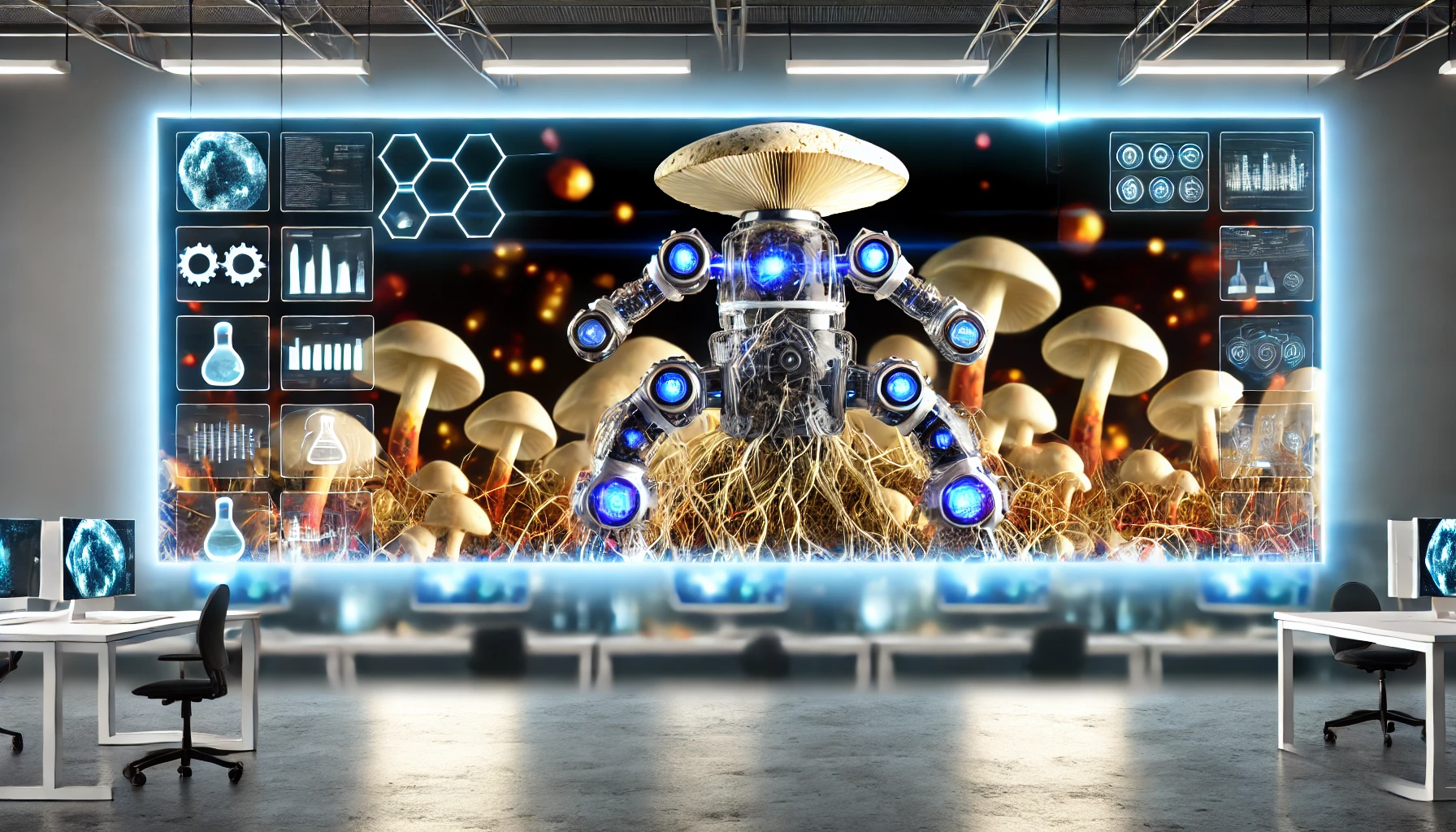Mushroom Learns to Crawl: The Rise of Biohybrid Robots and Living Robotics
A significant leap in robotics has just occurred, blending biology with machinery in ways that seemed like science fiction just a few years ago. In a remarkable development, scientists have given a robot body to a mushroom, allowing it to “crawl” and respond to its environment. This exciting breakthrough in biohybrid robots paves the way for a new era of living robotics, where biological systems are integrated into mechanical systems to create intelligent, adaptable machines.
This blog explores the revolutionary concept of mushroom-powered robots, how biohybrid technology works, and the potential applications for these living systems in various industries.
What is a Biohybrid Robot?
A biohybrid robot is a machine that integrates biological components—like living tissues or organisms—with robotic systems. These robots utilize the biological systems’ ability to sense, react, and grow, making them fundamentally different from traditional robots, which rely entirely on mechanical or electronic components. The integration of living organisms allows these machines to interact with their environments in ways previously impossible for non-living systems.
In the case of mushroom-powered robots, scientists at Cornell University and Florence University have placed a species of edible mushroom within a robot body, leveraging the mushroom’s ability to produce electrical signals in response to stimuli. This creates a self-regulating system that moves in response to light and other environmental factors(UNILAD)(The Independent).
How Do Fungal Robotics Work?
The idea of using fungal robotics stems from the mushroom’s ability to generate electrical signals naturally. Fungi, especially mycelium—the thread-like structure of mushrooms—can transmit electrical impulses in a way similar to the human nervous system. By connecting these natural biological systems to robotic actuators, researchers have created a biohybrid system where the robot responds to the electrical “commands” from the mushroom. This is achieved by embedding mycelium sensors into the robot, allowing it to sense and react to changes in its environment(The Independent).
For example, when ultraviolet light shines on the mushroom, it generates electrical signals that trigger the robot’s movements. By adjusting the intensity of the light, the mushroom can control how fast or slow the robot crawls, demonstrating a new way to integrate living organisms with robotics.
The Potential of Living Robotics
Living robotics is an exciting and relatively new field, and the potential applications are vast. The ability of biohybrid robots to adapt to unexpected environments makes them ideal for tasks where traditional robots struggle, such as in agriculture, environmental monitoring, or even space exploration. The mushroom robot, with its ability to respond to environmental cues, is a prime example of this adaptability.
One of the most promising areas for biohybrid robots is in agriculture. Imagine mushroom-powered robots that can crawl through crops, using mycelium sensors to detect soil conditions and make real-time decisions about when and where to water, fertilize, or harvest. These robots could help farmers optimize their yield, reduce waste, and minimize environmental impact(UNILAD)(The Independent).
Another exciting application is in environmental monitoring. Fungal robotics could be deployed in ecosystems to sense changes in humidity, temperature, or chemical compositions, allowing researchers to monitor climate changes or pollution in real-time.
Mushroom Robots and the Future of Robotics
The integration of mushrooms into robotics may sound futuristic, but the technology behind mushroom biohybrid robots represents the cutting edge of robotics research. The use of organic robotics labs like the one at Cornell University is pushing the boundaries of what is possible, combining biology and engineering to create more adaptable and resilient machines.
As researchers continue to refine this technology, we could see biohybrid robots used in a wide range of industries, from healthcare to disaster response. In healthcare, biohybrid robots could be designed to interact more naturally with human tissues, leading to innovations in surgery, prosthetics, and even drug delivery systems.
Similarly, biohybrid systems could play a role in living robotics for disaster response, where adaptability is critical. Imagine robots that can crawl through rubble, adjust to changing environments, and detect survivors based on environmental signals they sense through their biological components. These robots could revolutionize how we respond to emergencies, providing more effective and intelligent solutions(The Independent).
Challenges and Future Directions in Biohybrid Robotics
While the potential for living robotics is vast, challenges remain before biohybrid robots can be widely adopted. One of the main challenges is maintaining the health and functionality of the biological components over long periods. For example, the mushroom-powered robots rely on the longevity of the fungi, which must remain alive and responsive for the system to work.
Another challenge is the scalability of this technology. While current experiments with fungal robotics have demonstrated exciting results, scaling up to create robust, reliable systems that can function in various industries will require further research and development(UNILAD).
However, as advances in mycelium sensors and bioengineering continue to grow, the barriers to integrating biological systems into robotics will decrease, paving the way for more complex and sophisticated biohybrid robots.
The Exciting Future of Mushroom-Powered Robots
The concept of a mushroom robot might sound strange today, but it represents a major leap in the field of biohybrid robotics. By integrating living systems into machines, scientists are creating more adaptable, responsive, and intelligent robots capable of performing tasks in ways traditional robots cannot. From mycelium sensors to self-regulating systems that can “learn” from their environment, mushroom-powered robots are leading the way into a new era of robotics.
With the potential applications in agriculture, environmental monitoring, healthcare, and disaster response, the future of living robotics is bright. As research progresses, we may soon see biohybrid robots becoming part of our everyday lives, offering new solutions to complex challenges.
For more insights into cutting-edge technologies and innovative robotics, explore the resources at Regent Studies.
To learn more about the breakthrough in mushroom biohybrid robots, check out The Independent’s article on the research.




